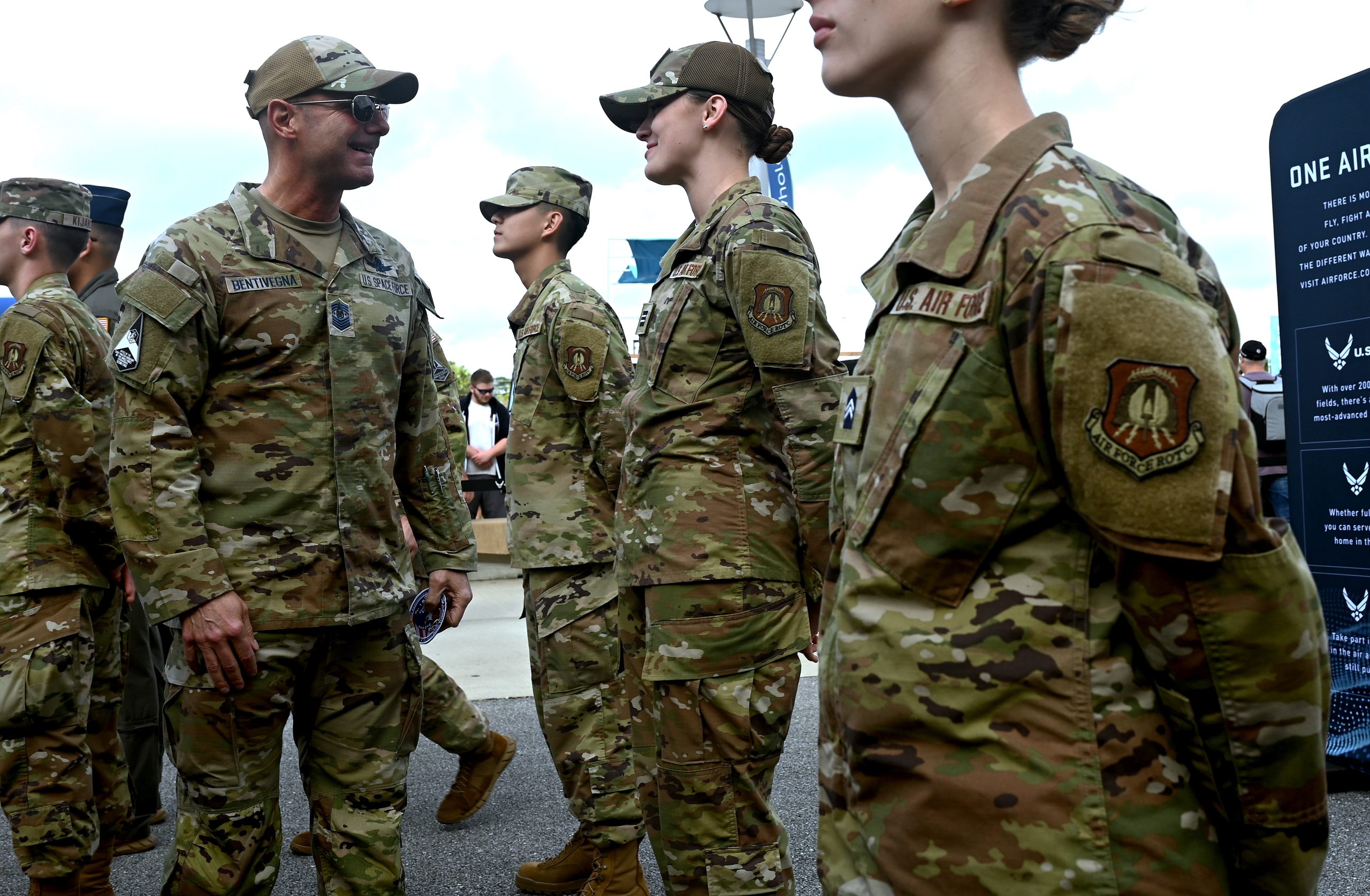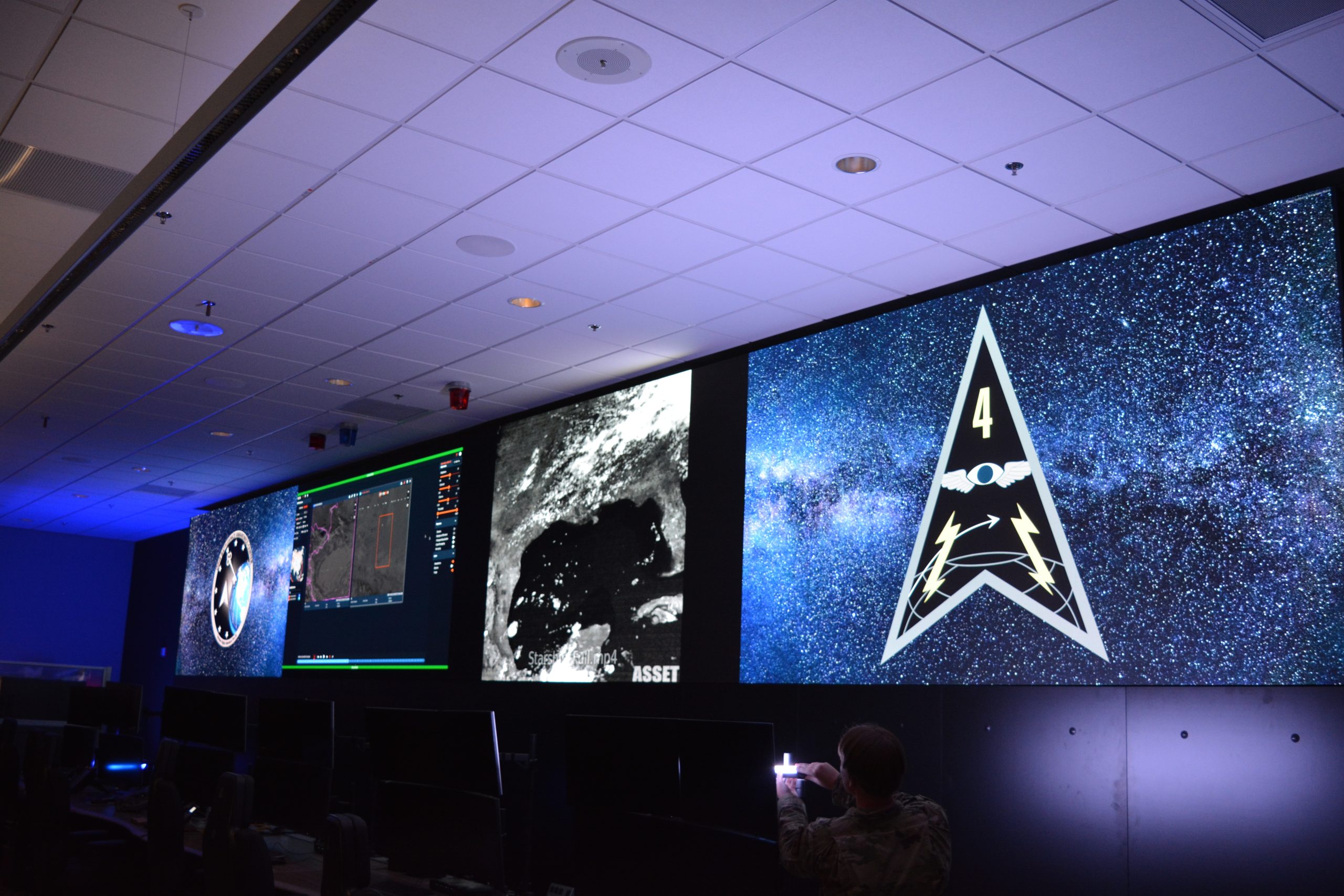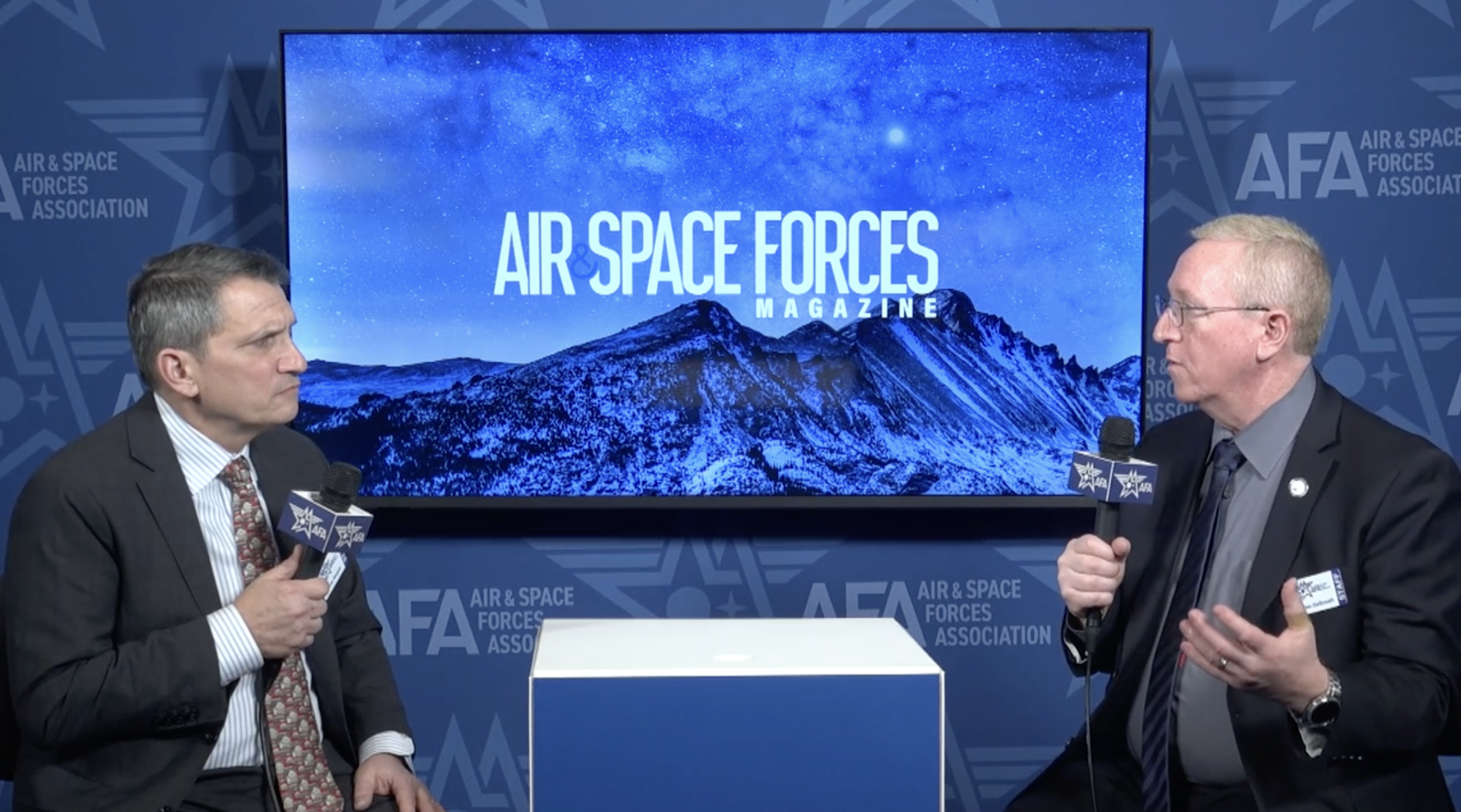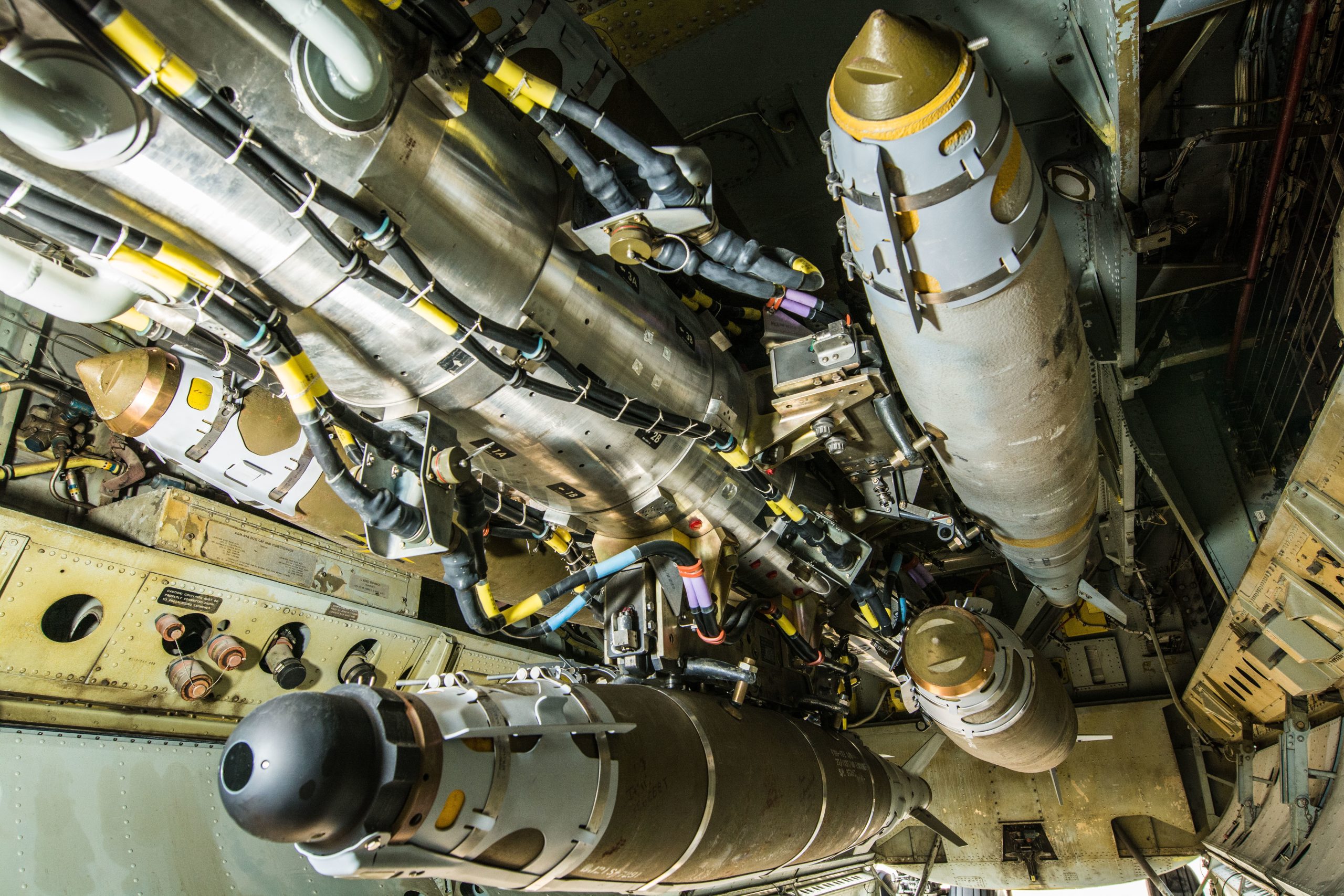AURORA, Colo.—The Space Force is establishing its first Guardian recruiters as the service seeks to take greater ownership of its force from day one, military officials told Air & Space Forces Magazine.
Currently, the Air Force Recruiting Service (ARFS) runs recruiting for the Space Force. However, AFRS and the Space Force are setting up a detachment at the agency’s headquarters at Joint Base San Antonio Lackland, Texas, with the aim of setting up a full squadron of around 30 Guardians later this year—a little less than one-third have gone through recruiting school.
“The Air Force has been a phenomenal partner with the Space Force in doing the recruiting for us. We didn’t have the infrastructure when we stood up,” Chief Master Sergeant of the Space Force John F. Bentivegna said in an interview at the AFA Warfare Symposium.
“But all that to be said, we recognize that this is a service responsibility. This is a service obligation to attract and recruit our own, so as we were building capacity. … We have to start investing in recruiting. And we sent a couple of people down to the Recruiting Service to help facilitate the recruitment of Guardians in the Air Force ecosystem. But the big change was we were ready to start putting more skin in the game,” he said.
Previously, the Air Force recruiters who were focused on bringing in new Guardians were scattered around the country, noted Brig. Gen. Christopher R. Amrhein, the commander of the Air Force Recruiting Service. Now, the Space Force and AFRS want to set up a dedicated unit that would enable Guardians to speak to potential recruits directly.
“They were kind of scattered, and what we wanted to be able to do is have a consolidated squadron based out of San Antonio that is a direct report to the AFRS commander,” Amrhein said. “I wanted them to have literally the closest touch points, with marketing, with operations, with medical waivers, or our communications folks, because they’re building this, and so if they’re in an embedded around the headquarters, then those touch points are there.”
That headquarters approach will enable the Guardians at AFRS—currently under a detachment led by Lt. Col. Jason Cano, the Space Force Recruiting Branch Chief—to pursue recruiting more effectively.
“‘Do we have all the recruiting ingredients right? And what other opportunities are there?” Amrhein asked. “There was a potential that we were going to put Guardians embedded in squadrons, what we found is that we think we can build a better synergy” with a dedicated unit, Amrhein added.
Both Amrhein and Bentivegna praised current Guardian recruits as highly motivated and intelligent. But they said there is room for tweaks.
The Air Force is a massive organization, with an annual goal of 33,100 Active-Duty recruits and a total strength of nearly 700,000 Airmen across Active-Duty, the Air National Guard, and the Air Force Reserve, and with over 150 Air Force Specialty Codes (AFSC), the service term for career fields. The Space Force, meanwhile, has three enlisted career fields, five officer career fields, fewer than 10,000 uniformed Guardians, and is seeking to recruit 800 Guardians in 2025.
“We started to identify Guardians who were going to help build the recruitment strategy for the service,” Bentivegna said, adding that eight USSF recruiters have been identified so far. “They’ve actually gone to recruiting school with the Air Force, they went through that training, and they’re in the process. Several of them are already in Texas [at the AFRS headquarters] … Essentially, by the beginning of the summer, we’re hoping to have the initial cadre of trained Guardians that are down there, and then they’re going to start working through what is the recruiting strategy for the service.”
Bentivegna said he wanted Guardians to be like sports teams “scouting” prospects, a theme he has pushed given the Space Force’s role as a specialty service. He said even a professional sports team reached out about identifying talent.
“I use the terminology [of scouting], having these initial cadres of Guardians down there think about a process, a philosophy: how do we scout the right talent to come into the service and just take a different approach?” he said. “I use a different word because I want them to think about it differently. I’m afraid if I keep just using ‘recruiting,’ they’re just going to go right to here’s the checklist, here’s the playbook that the other services use, we’re just going to do that. But if I call it something different they’re going to think about it differently … start to think about what scouting in the Space Force looks like in the future, not just do the same as everyone else.”
Bentivegna said he wants Guardians to be keen observers of talent and not apply a preexisting model. That is necessary, he said, because of the unique skills the Space Force needs to attract.
“You think about the only three [enlisted] functional areas that we do in the Space Force: cyber operations, space operations, and intelligence—even from on the enlisted side, very complex, very, very challenging technical training,” he said. “Then operationally, what we’re asking these young men and women to do, even though they’re wearing [enlisted rank] stripes, is difficult. There’s some ability to learn to critically think that has to be applied to do that.”
Once a recruit enlists, Bentivegna sees possible changes as they undergo basic military training and tech school.

“That transformation from civilian to Guardian should be transformative,” he said. “If we have an attrition rate, I’m OK with that. … We’re able to truly stress and assess the capability of someone to be a Guardian operationally. … These have to be meaningful and transformative processes that we have in the initial year of a Guardian’s life. And so it should be difficult. We should stress them, and I’m OK with it if we accept some risk on the front end as we’re working through this.”
One thing the Space Force already knows is that Guardians recruits are generally older than other services.
“The life experience, whether we’ve had individuals that own businesses, individuals married with children, have already had another kind of a career before coming over. We’re just attracting and recruiting a different group of individuals,” Bentivegna said. “If I have a 35-year-old who has a master’s degree, has a cyber business, and has a house they’re paying a mortgage on back home, do I really need to necessarily go through the room and check for dust in the locker now? … It teaches them discipline. But I think some of these individuals have already shown through life they have discipline. They know how to manage their time.”
That doesn’t mean relaxing standards, and may mean increasing them, he said.
“Because they’re more mature, I think maybe I could stress them a little bit more, because maybe they bring a little bit more to the table that allows me to put that training and expectation further to the left … and less of a burden on the operational side,” Bentivegna said.









